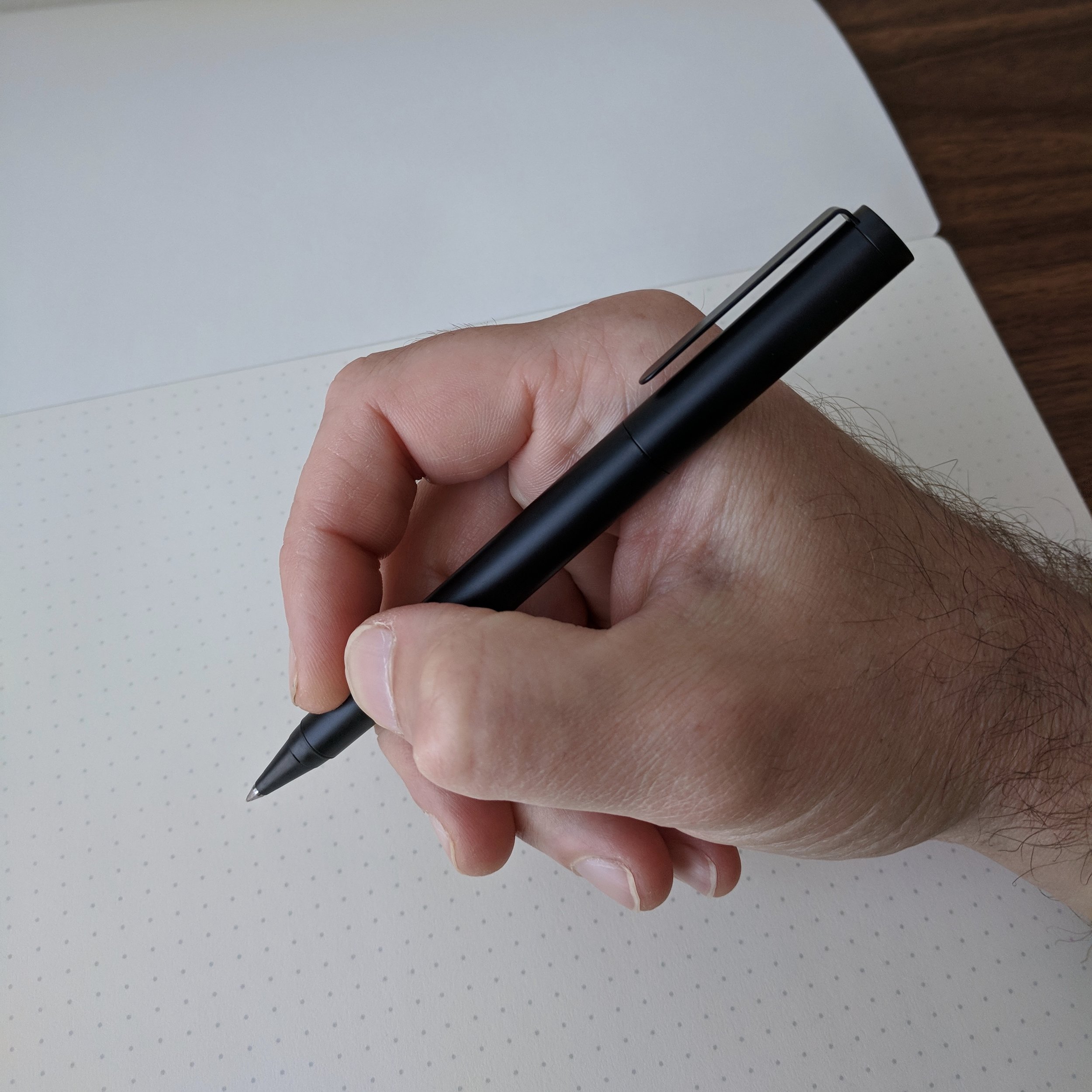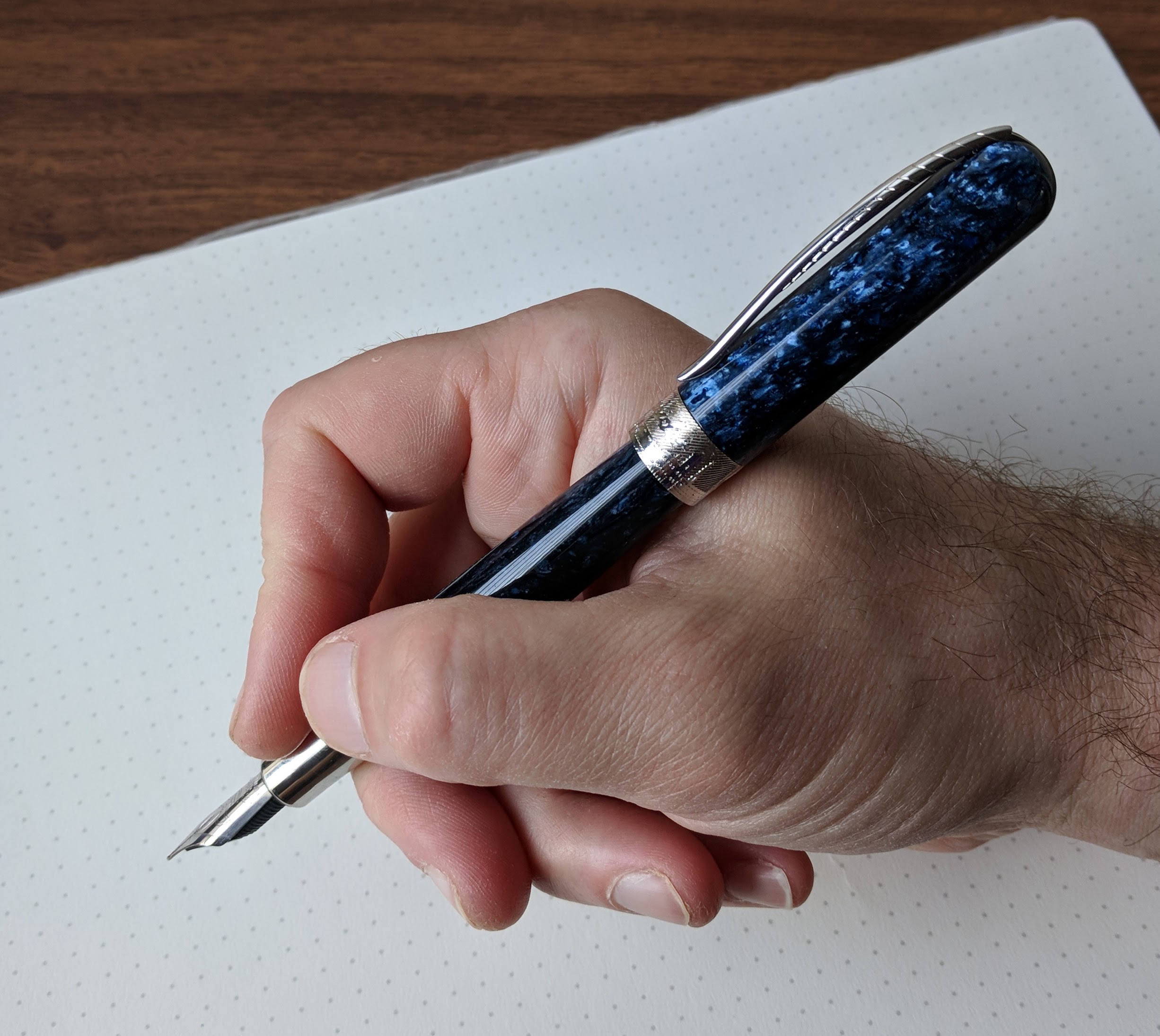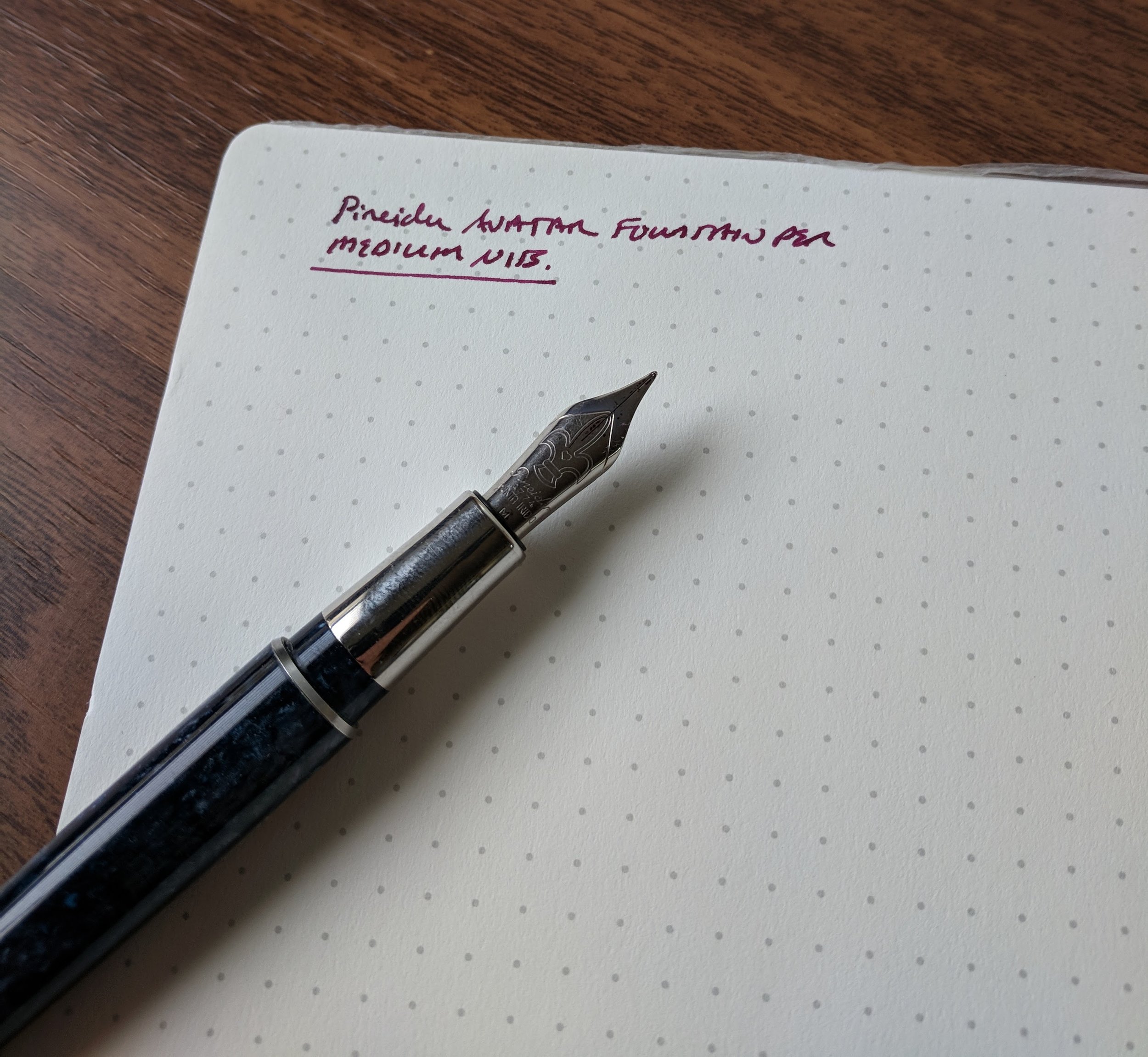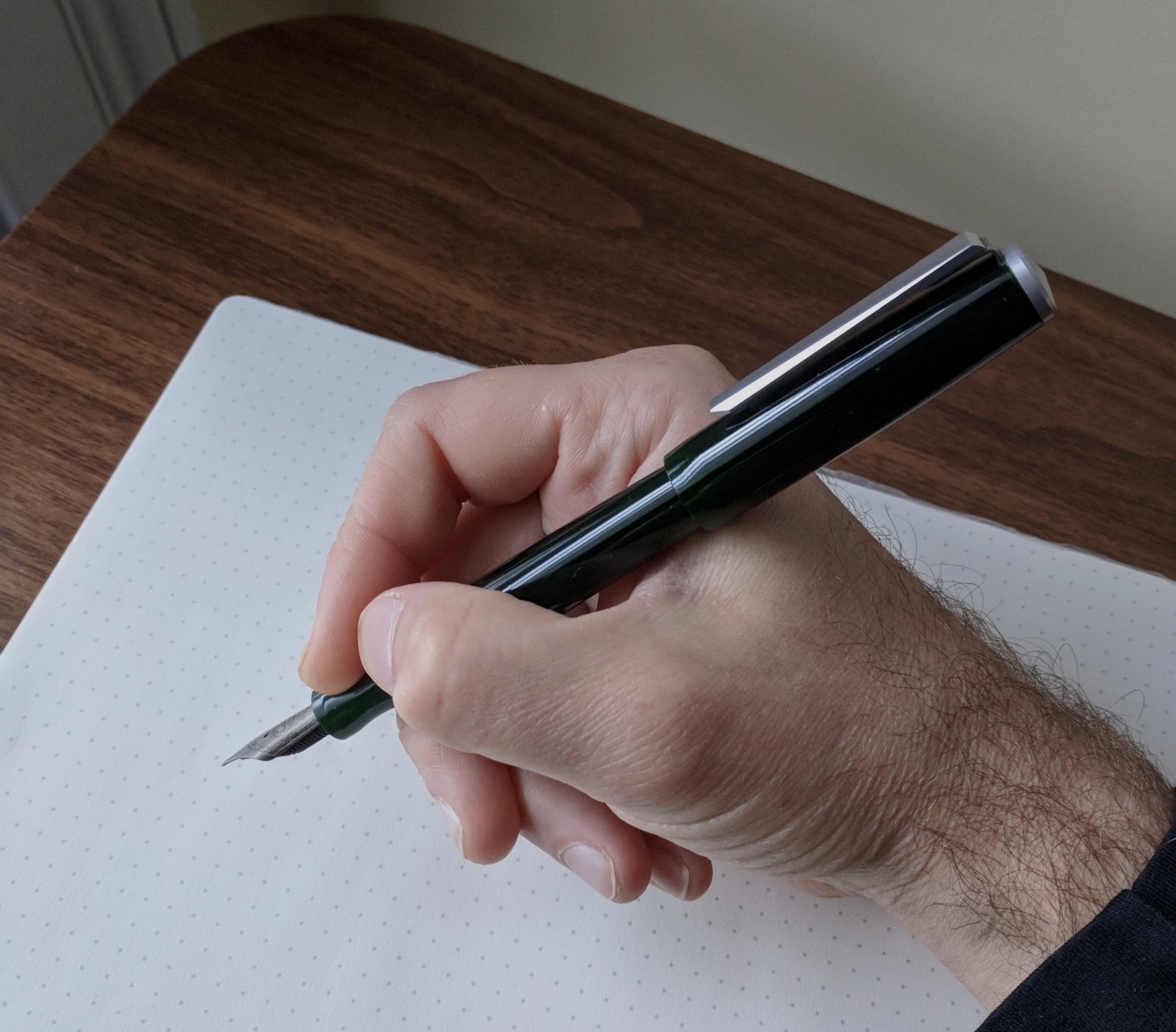When we last heard from Inventery, they had launched their Mechanical Pen, a retractable rollerball that made my list of favorite new pens from 2017, and has since found a regular place on my desk. Jeff from Inventery recently reached out and asked whether I wanted to review their new Pocket Fountain Pen, and of course I said yes. I enjoy pocket pens, and the one thing that's eluded me over the years is a pocket fountain pen that's small enough to conveniently carry in my pants pocket, while still offering an adequate combination of durability and a comfortable writing experience. Inventery's latest offering may get me there.
Three versions, from left: Brushed Chrome, Brass, and Onyx.
As with the Mechanical Pen, the Pocket Fountain Pen is made of brass. If you tend to avoid brass pens because of that metallic smell they leave on your hands, read on, because Inventery offers two options in addition to raw brass: Onyx (black) and Brushed Crome. While the base of these pens is still brass - giving them weight and durability - the pens themselves have been coated.
Inventery has great packaging. Pictured is the kit for the Pocket Fountain Pen with Extender, in Onyx. I've opted to swap in the Rollerball tip, with the clip, but you can see the options for fountain pen nib, clipless cap, stylus cap, and keychain cap, as well as the extender with converter.
The main selling point of the Pocket Fountain Pen is customization. If you opt for the base model, the Pocket Fountain Pen comes with an interchangeable cap system, allowing you to swap out the clip for a clipless look, or add a stylus or keychain option. Perhaps most intriguing to me is Inventery's decision to include a .5mm PRS "interchangeable ballpoint head," which will transform the Pocket Fountain Pen into a rollerball pen that accepts fountain pen ink from either short international cartridges or a standard converter. In order to use the converter, you will need to purchase the "extender," which screws into the barrel to give the pen additional length, much like that featured on the Kaweco Supra.
Overall, the Pocket Fountain Pen offers a quality writing experience. Inventery has chosen Schmidt nibs - always a solid and reliable choice - and I found the length, weight, and balance of the pen to be excellent. The cap posts securely, attaching to threads on the end of the barrel as with the Kaweco Liliput. (Note: I found that posting the cap on the "extended" pen made it too long.) The rollerball option surprised me the most. In the past, rollerball pens that accept fountain pen ink cartridges have tended to either leak, clog easily, or scratch the paper like a nail. I've had this one inked up with the same cartridge (Kaweco Ruby) for over a month, with no issues. I will note that since fountain pen ink is water-based and very wet, the .5mm tip will write wider than an equivalent gel or ballpoint pen, as fountain pen ink spreads more on paper than gel or oil-based ink. Think more "Uniball Vision Elite."
The one aspect of this pen that I didn't really like was the clip, which has no tension and isn't particularly functional, at least not in the traditional sense. This isn't a pen that will attach securely to your shirt pocket, though it will hook onto the edge of your pants pocket or a pen slot inside a bag, which may have been the idea.
I keep the clip on to use as a roll-stopper. Otherwise, I'd probably choose to go clipless. Kudos to Inventery for providing you with the option.
Takeaways and Where to Buy
I really enjoyed using the Inventery Pocket Fountain Pen, with my one quibble being the clip. That said, if you are truly carrying this as a "pants pocket" pen, or clipping the pen to the front of your jeans, the clip may work just fine. You also have the option to go completely clipless. Pricewise, the Pocket Fountain Pen is comparable to the Kaweco Supra, which I've reviewed before, and from a functionality perspective the Pocket Fountain Pen has an edge on the Kaweco Liliput because it feels more substantial in-hand and has a bit more girth and weight to it.
The pens have minimal branding, and the "I" logo on the cap is a nice touch. Don't forget to check out Inventery's line of leather pen sleeves, available in three sizes. (The medium size fits the Mechanical Pen.)
You can purchase the Inventery Pocket Fountain Pen, as well as the Mechanical Pen and a range of great accessories, directly from Inventery's online store. The kit shown here, which includes the Pocket Fountain Pen, extender, .5 PRS interchangeable rollerball/ballpoint section, and various interchangeable clip/stylus options, is priced at $165. Without extender and converter, the price drops to $135. As mentioned above, color options include Onyx, Brass, and Brushed Chrome.
Disclaimer: Inventery provided me with the pens featured in this review free of charge. Many thanks to Inventery for making this review possible!









